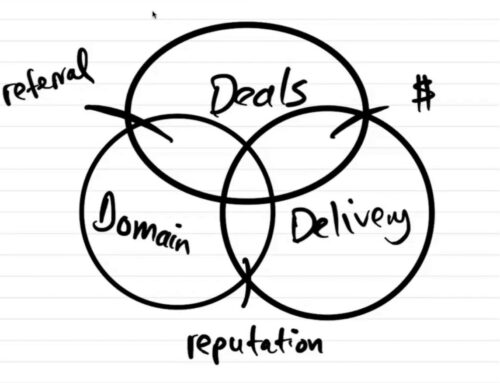Brittany Cotton, Head of Coaching at 7CTOs, defines “being” and reveals how “being” affects relationships in the professional world. Who am I being? What does being mean? Is it how I show up? Brittany explains that being is something we’re doing all the time. It’s how we show up in the world every day. It’s the essence of how we show up; it’s our particular flavor. So being is something that we are always naturally doing.
When we first meet someone, there are a few things that we consciously or subconsciously notice about them to gauge their essence. What are they wearing, how are they saying something, how do they make me feel? Being is the natural way we show up in the world. If you can notice how someone is being, you know how much curiosity you can have with them, how much space you can have with them, and how you can speak to them. If someone is being a specific way and you show up as the complete opposite, they will feel unseen, unheard, unnoticed, or not ready to hear what you have to say. As leaders, if you notice how someone is being, whether positive or negative, you can meet them where they are, which can prove to be helpful for both parties.
As leaders, we know that it’s our job to see and serve, but if we aren’t really seeing someone’s state of being or how they show up, we’re already missing something. So if someone is showing up in a specific way and as a leader, you pick up on it and even call them out on it, followed by asking if there is anything they need, they will feel more seen and heard than they ever had before.
There’s a level of courage required to take that next step in calling out someone on how they’re being and then following up with how you can support them. Some leaders prefer to notice their employees showing up a certain way, and instead, they interact with that person in a tailored approach without explicitly calling them out, and that’s ok too.
Etienne brings up a good point for those who have been in Corporate America. He explains that within his experience in Corporate America, there was always a consistent white wall of management where managers and leaders were expected just to do the work, leave personal stuff at the door, show up consistently, and don’t notice people being.
While it’s true that some work cultures still hold onto those values, noticing how someone is being doesn’t necessarily require you to actually say something and cross that line of what’s professional or too personal. It’s more about noticing how a person shows up and then tailoring your approach in how to interact with them as a result of how they are showing up. It helps leaders lead more robustly and intuitively. It allows the leader to evaluate and think about how they need to lead team members better. For example, the leader can ask themself, who do I need to be in this situation for the best outcome.
When we think about the question, “who do I need to be,” what does this mean? Especially to someone in technology or engineering. What does this mean to an innovative CTO or tech leader? Brittany replies it’s about noticing things, not necessarily to “fix them,” but to understand them better. It’s supposed to help leaders better understand what is needed so that a meeting or project, for example, doesn’t then get derailed.
It’s important to note that this situation around “being” is not to fix that other person’s state of being. Instead, it’s just another tool for leaders to understand their own work culture and talk to employees in a more impactful and meaningful way. It’s just noticing how people show up. It’s less about the other person and more about having more facility in how we show up.
It’s impactful to notice people’s being because it allows us to understand what we need to say to them or how we need to react to something. How someone shows up to the world directly reflects how and what they need to produce.
How can one stay authentic when focusing on being and noticing other people’s being? Brittany further clarifies that authenticity begins with you. So start noticing your state of being in yourself. As we begin to get good at choosing how we show up, we become more productive with our team.
What if there is a fear of not getting it right? What if we distinguish incorrectly? Brittany illustrates that there is truly no wrong way of doing this. If you notice how someone shows up, and if you match their energy, things can go wrong, so instead, it’s about consciously showing up in a different, perhaps more positive way, to keep things productive, pleasant, and positive.
Brittany reveals that when she started her coaching business for high-level executives six years ago, she firsthand dealt with the challenges of knowing how to effectively show up to be successful. Because she was very green and looked a bit young, she felt clients in the boardroom perceived her in a way that questioned her ability to bring positive change. So she consciously chose how to show up within those high-level meetings. She decided to show up confidently, boldly, and forthright, changing how people experienced her. It allowed her high-level clientele to feel safe and confident in her ability to add value to the room.
Today, we’re having these conversations to produce better results in careers and the professional world. We now know how a leader shows up, how they speak, and our experience with them, for example, allows us to discern if we like them and how it impacts us. If we as leaders excel at honing the skill of noticing how we are being or showing up, we control what we are trying to produce or achieve.
This can be a highly effective and meaningful tool in our leadership tool belt. It’s really about fully understanding and integrating the idea that how we show up directly impacts everyone in the room.
Brittany drives home that again, this idea of noticing how someone is being is not meant to be seen through the lens of a “problem solver.” Although this concept of “not fixing” may be difficult for a CTO or tech leader who is most likely constantly solving problems, it’s important to clarify that this technique is solely to help leaders expand. It’s just to notice how they are showing up and then knowing how to act upon it. Our CTOs don’t need to be fixed, Brittany explains. It’s about adding and expanding their tools and resources. It’s about helping CTOs and tech leaders notice what parts of themselves they haven’t seen or practiced. It’s about using these new skills to help expand product awareness, problem-solving techniques, relationships, and leadership styles.
Etienne adds that there is unrealized potential that a CTO type has in the C-suite. A CTO has so many skills they’ve had to hone, such as prowess, logical deduction, complete analysis, and to be able to wrap all those skills inside all these expanded skill sets is truly what 7CTOs is all about. It’s about putting innovative people together. The concept of curiosity, relationships, and being are all new practices that allow more insightful and impactful viewpoints.
Although they may not be applied every minute of every day, it’s how we use discernment as to when and how to use them for the higher good of everyone involved. It’s about using innovative leadership concepts with others and with oneself to then reach higher levels of success both professionally and personally. To achieve higher levels of success, we can’t rely on past management and leadership styles. It’s our responsibility to understand and integrate new modern tools to reach maximum levels of innovation.




